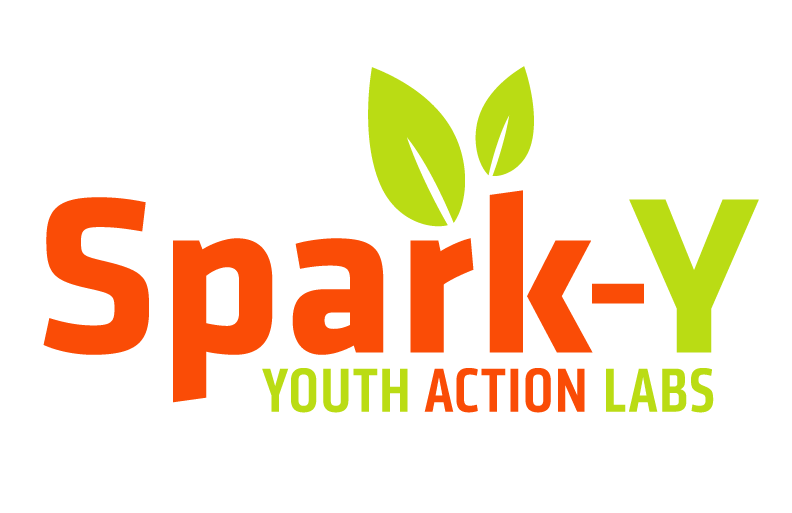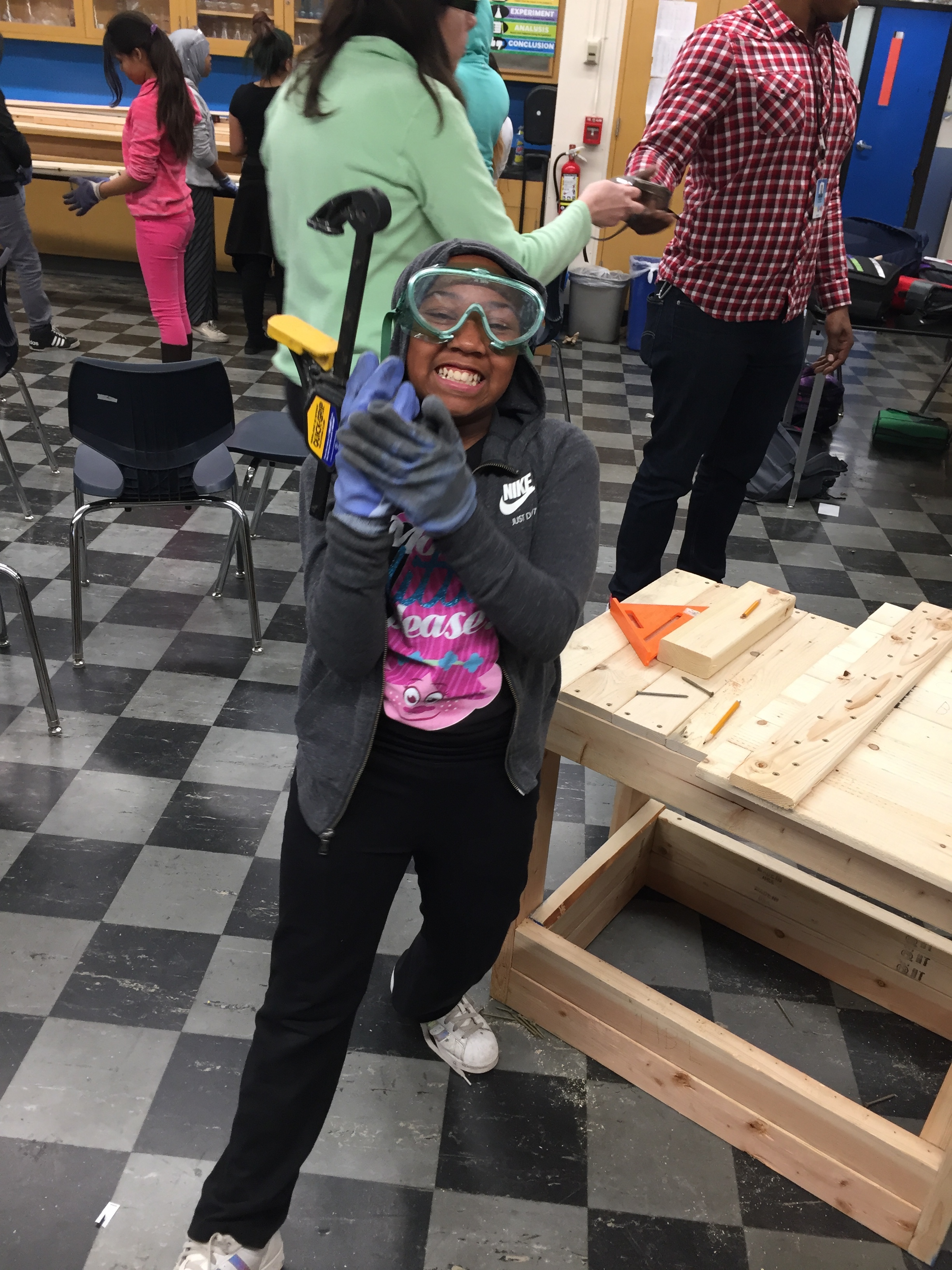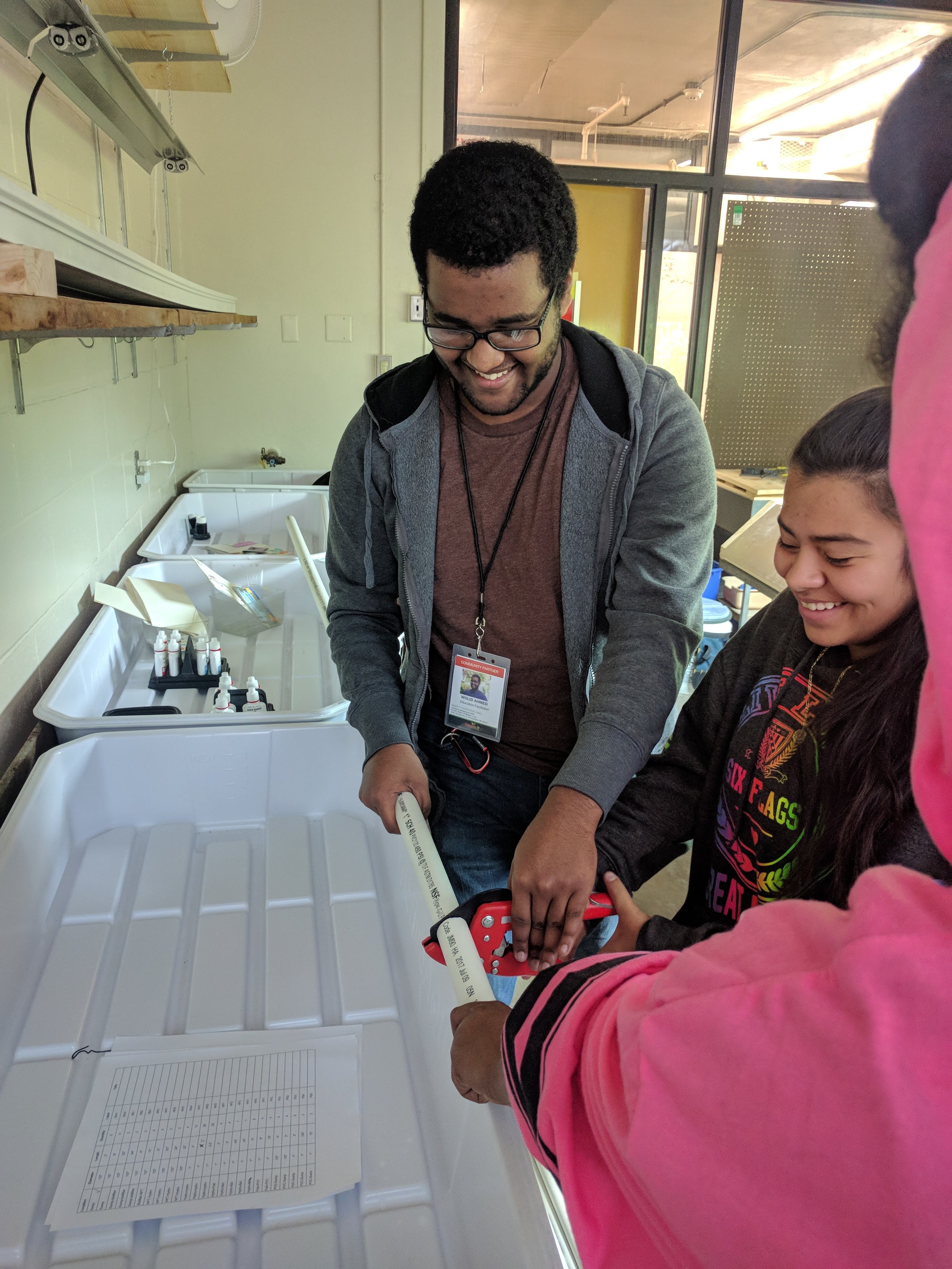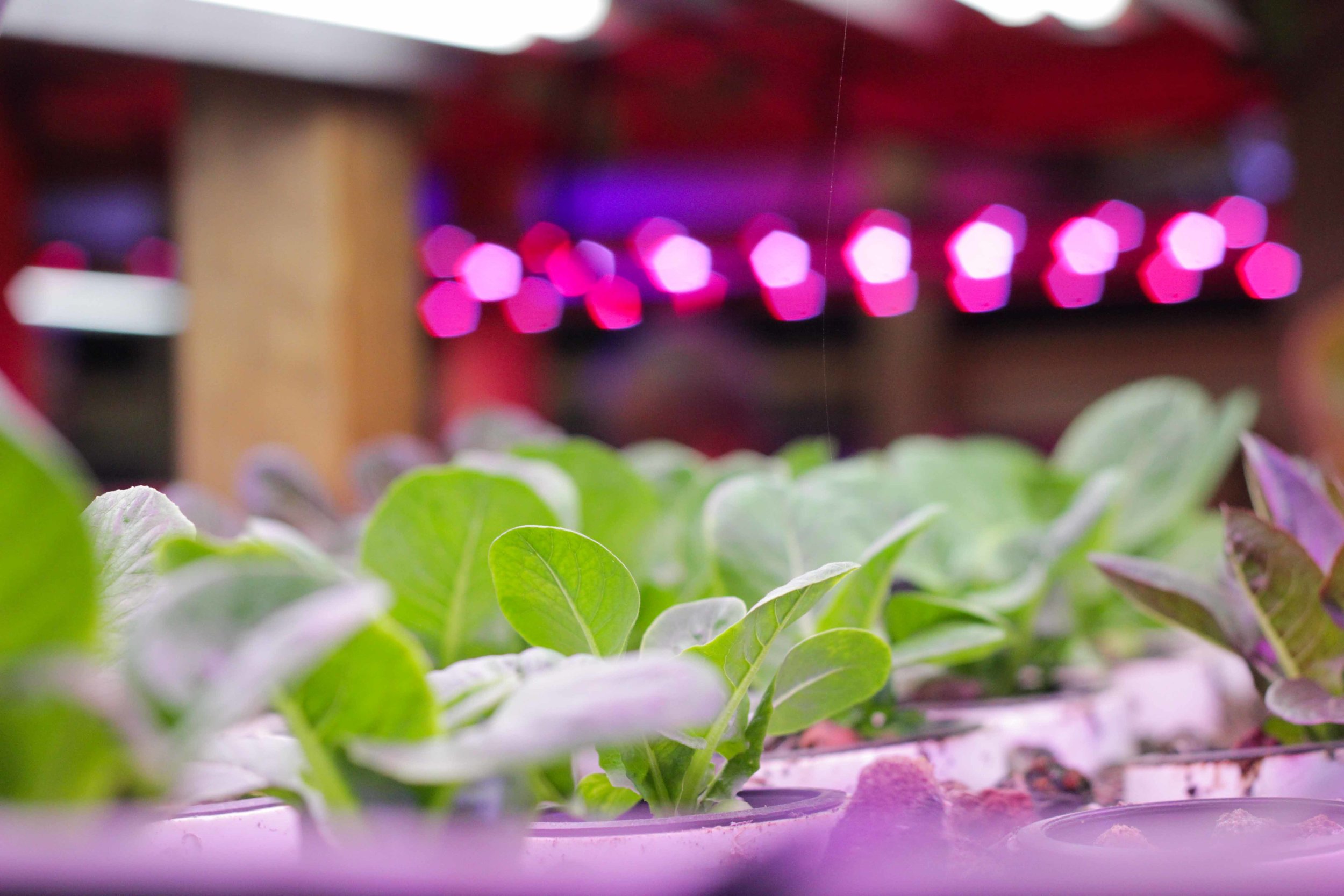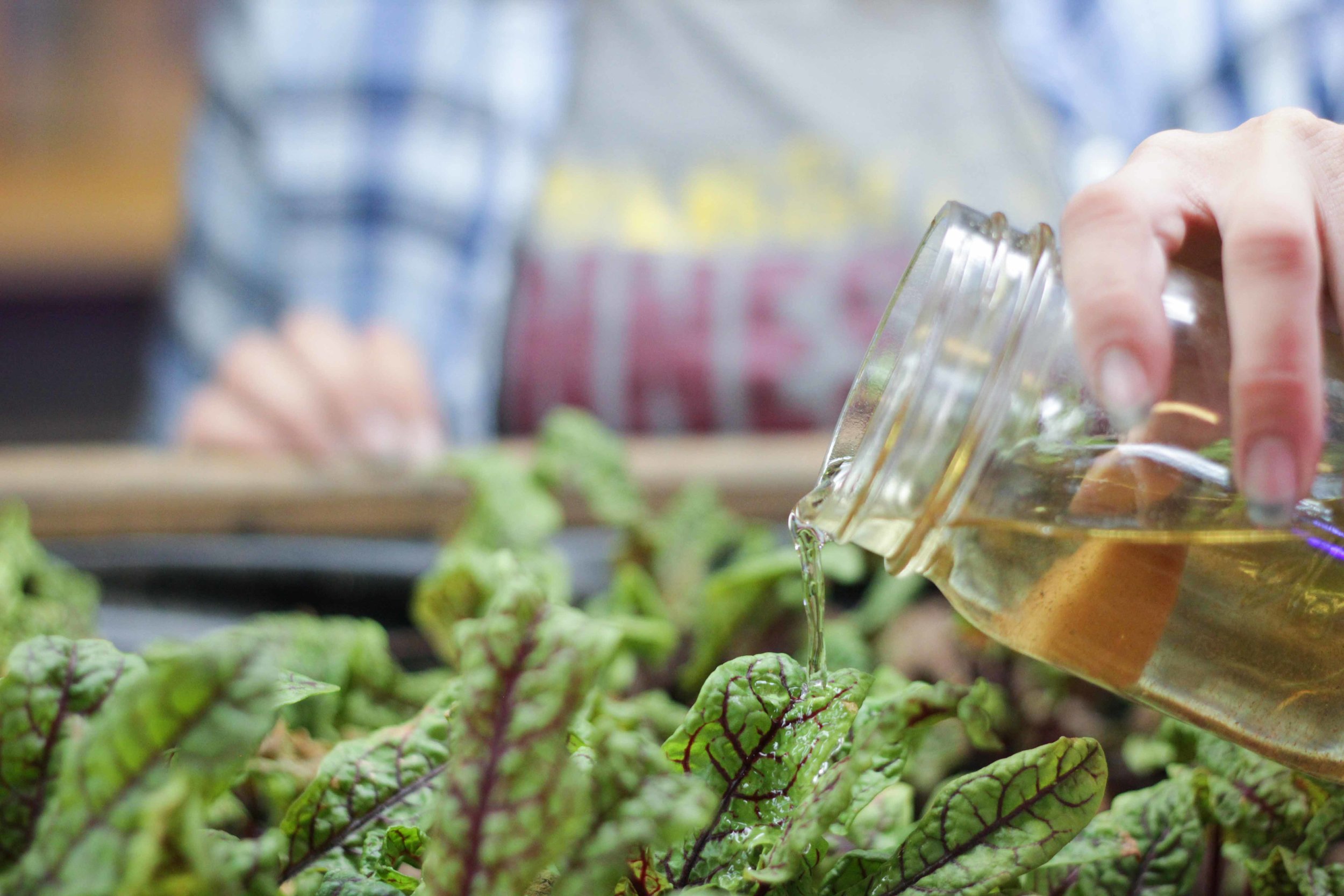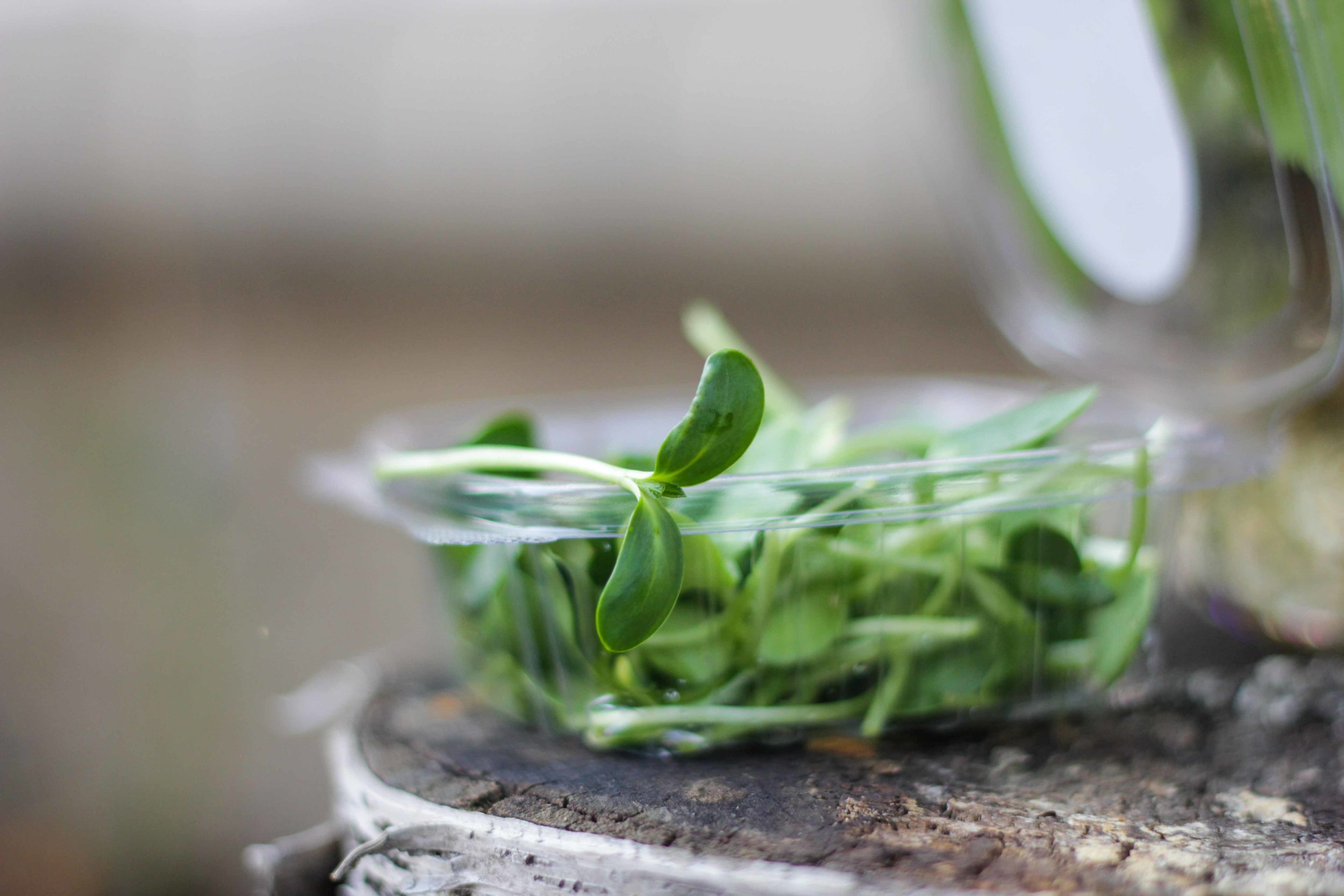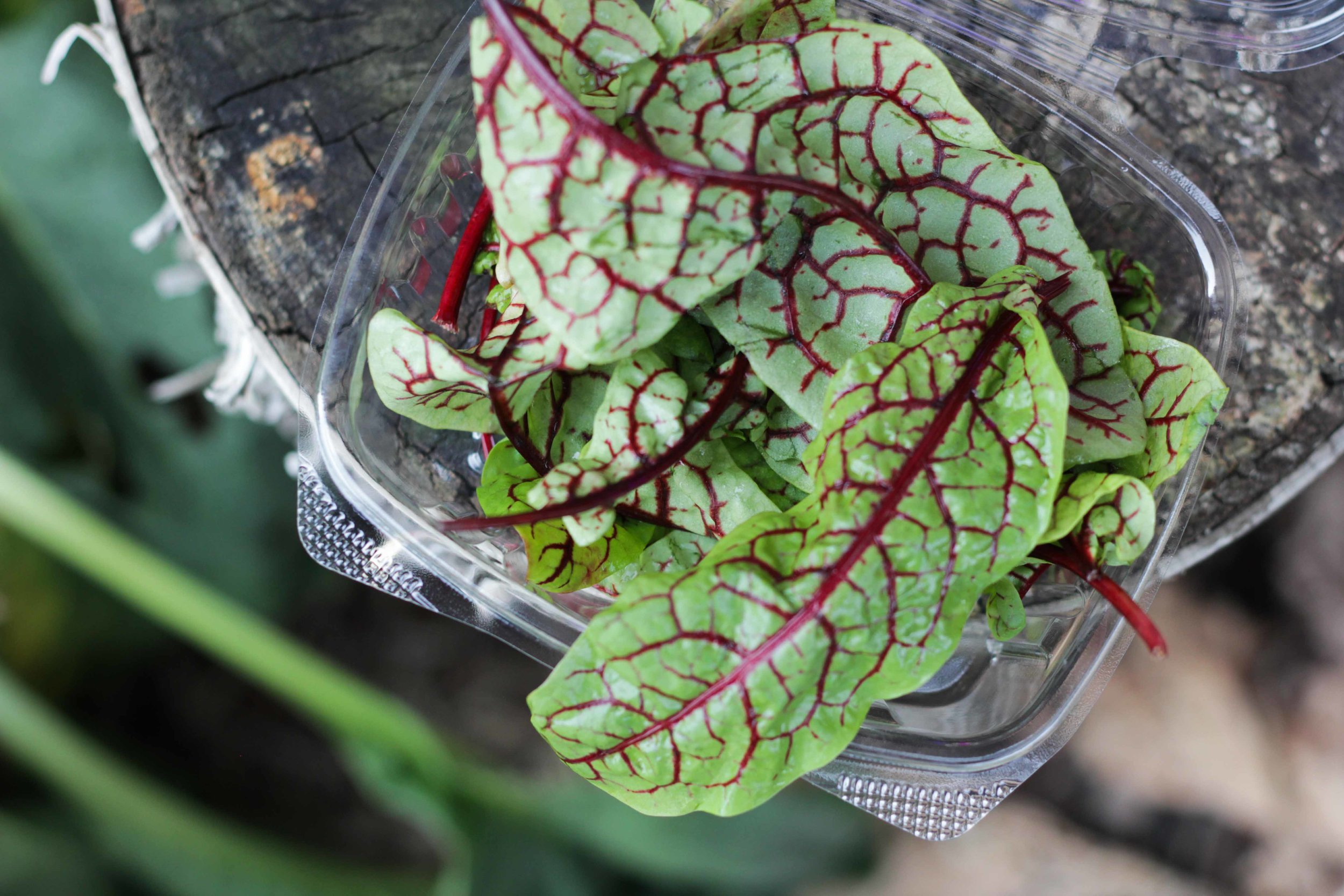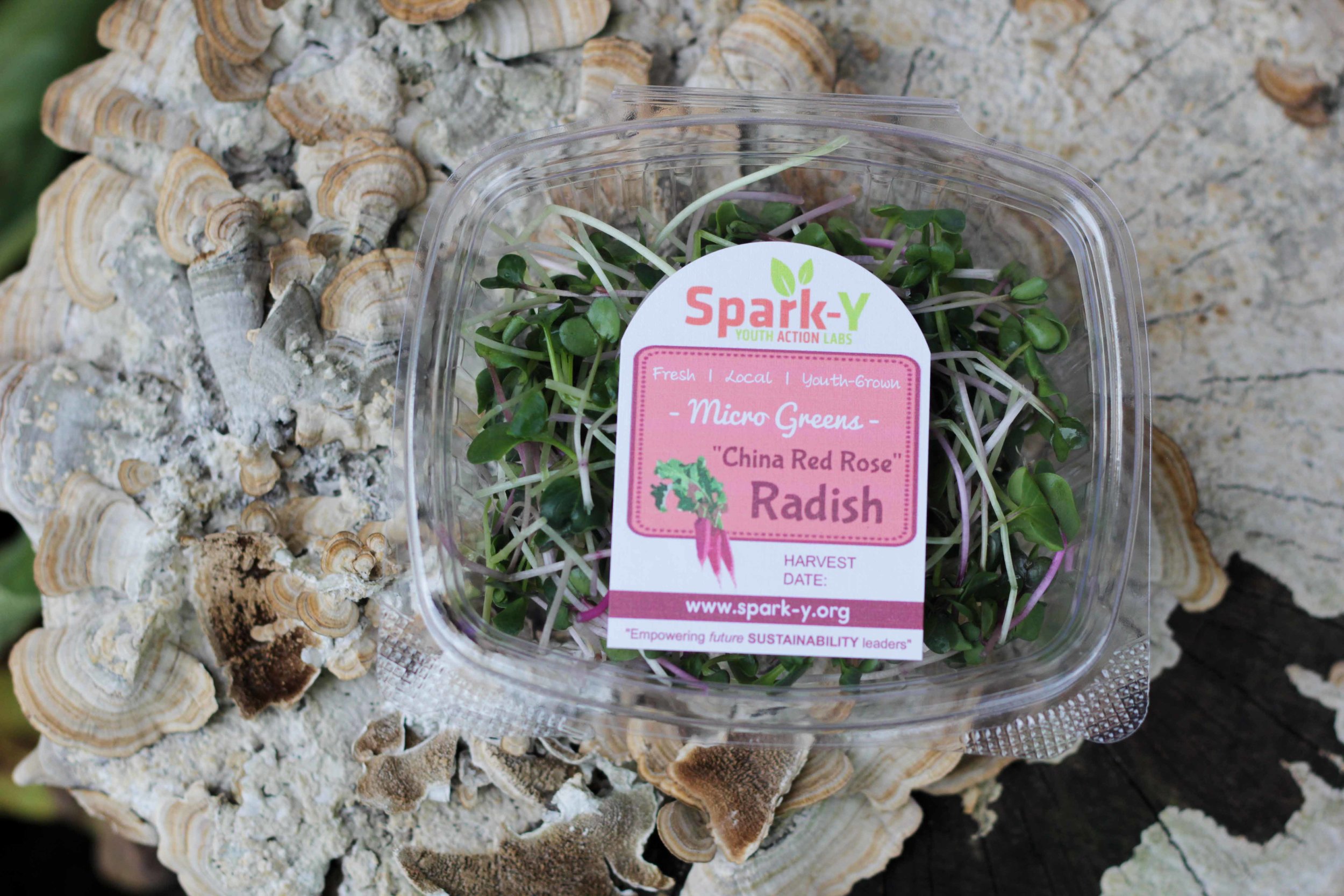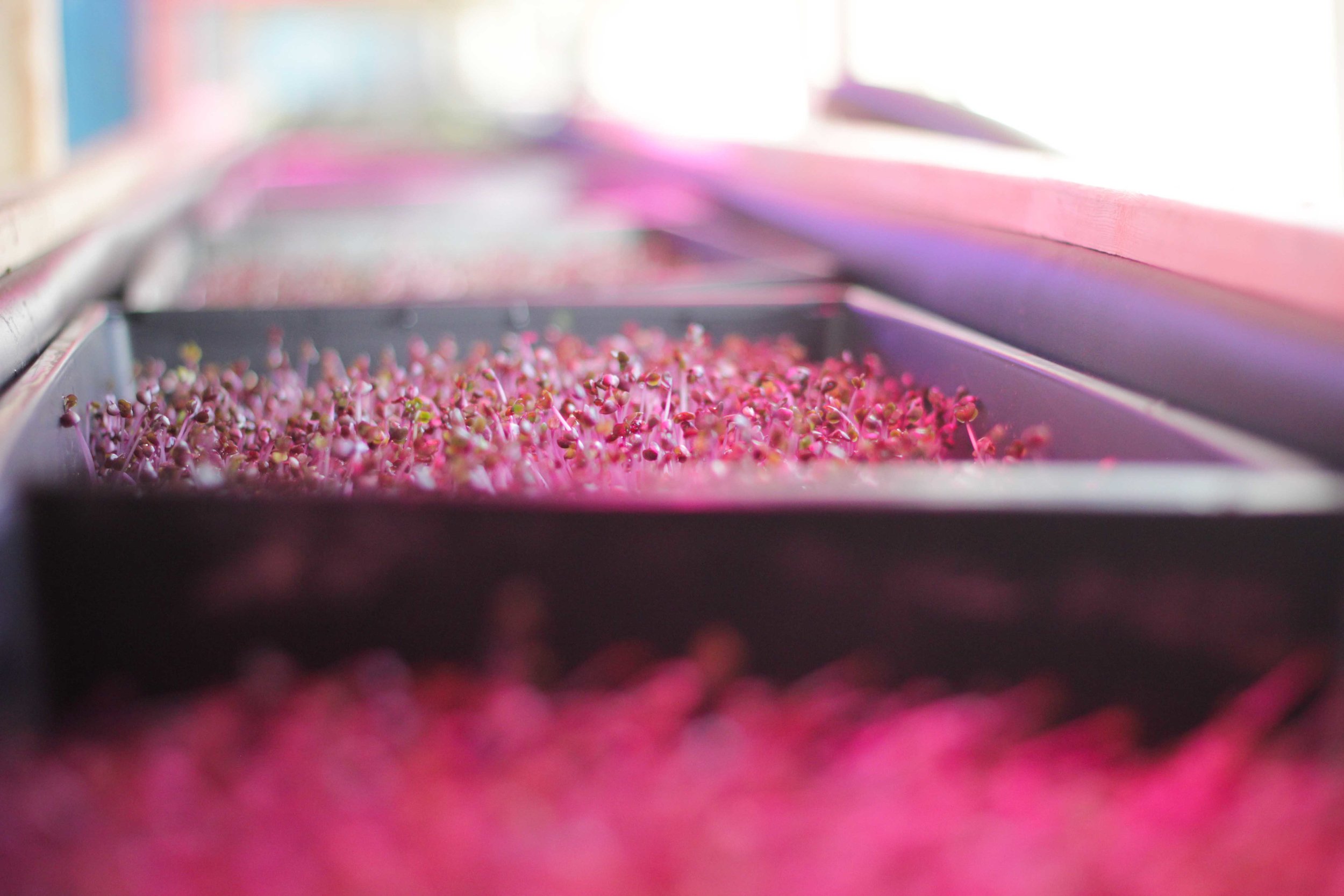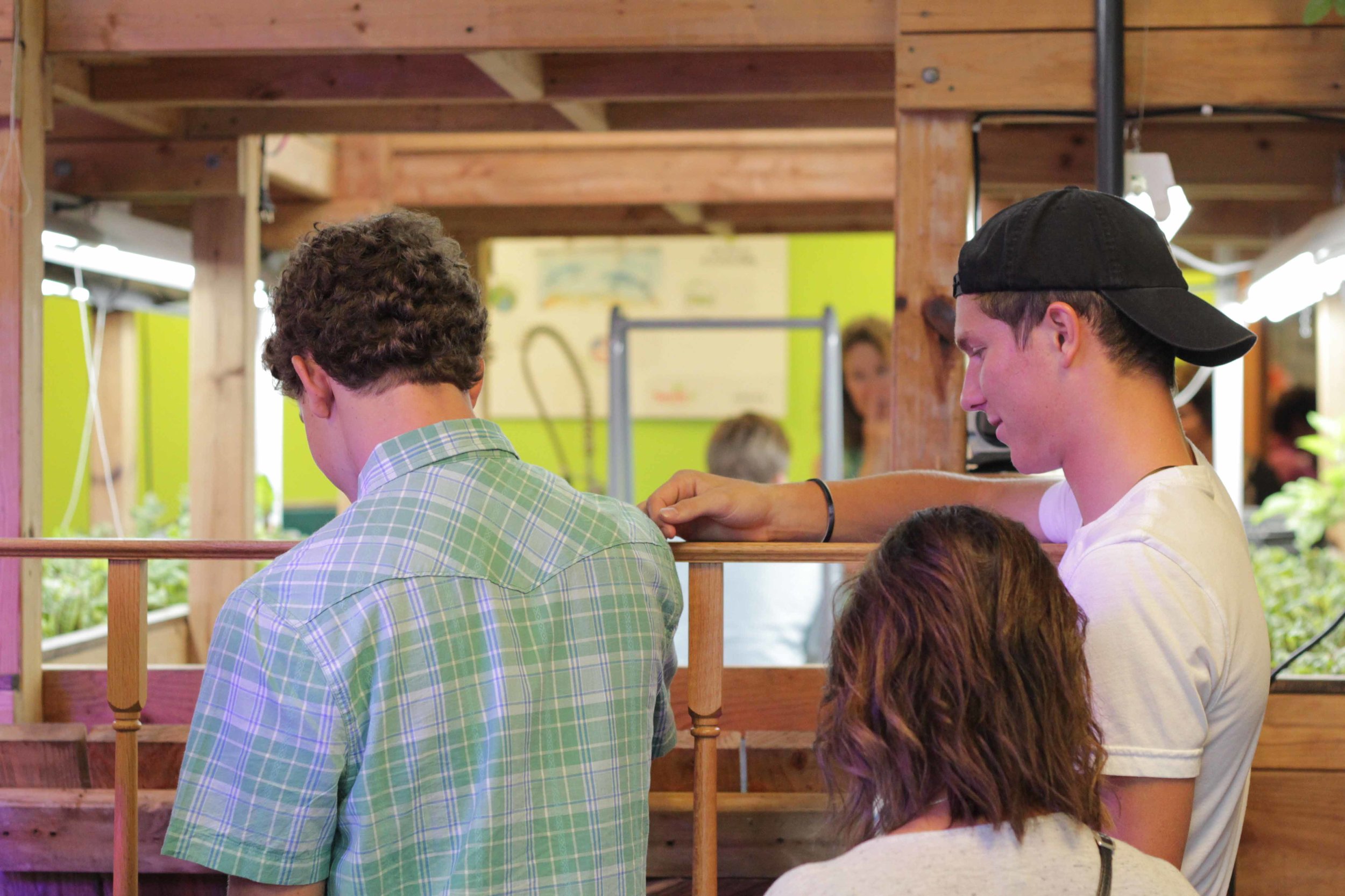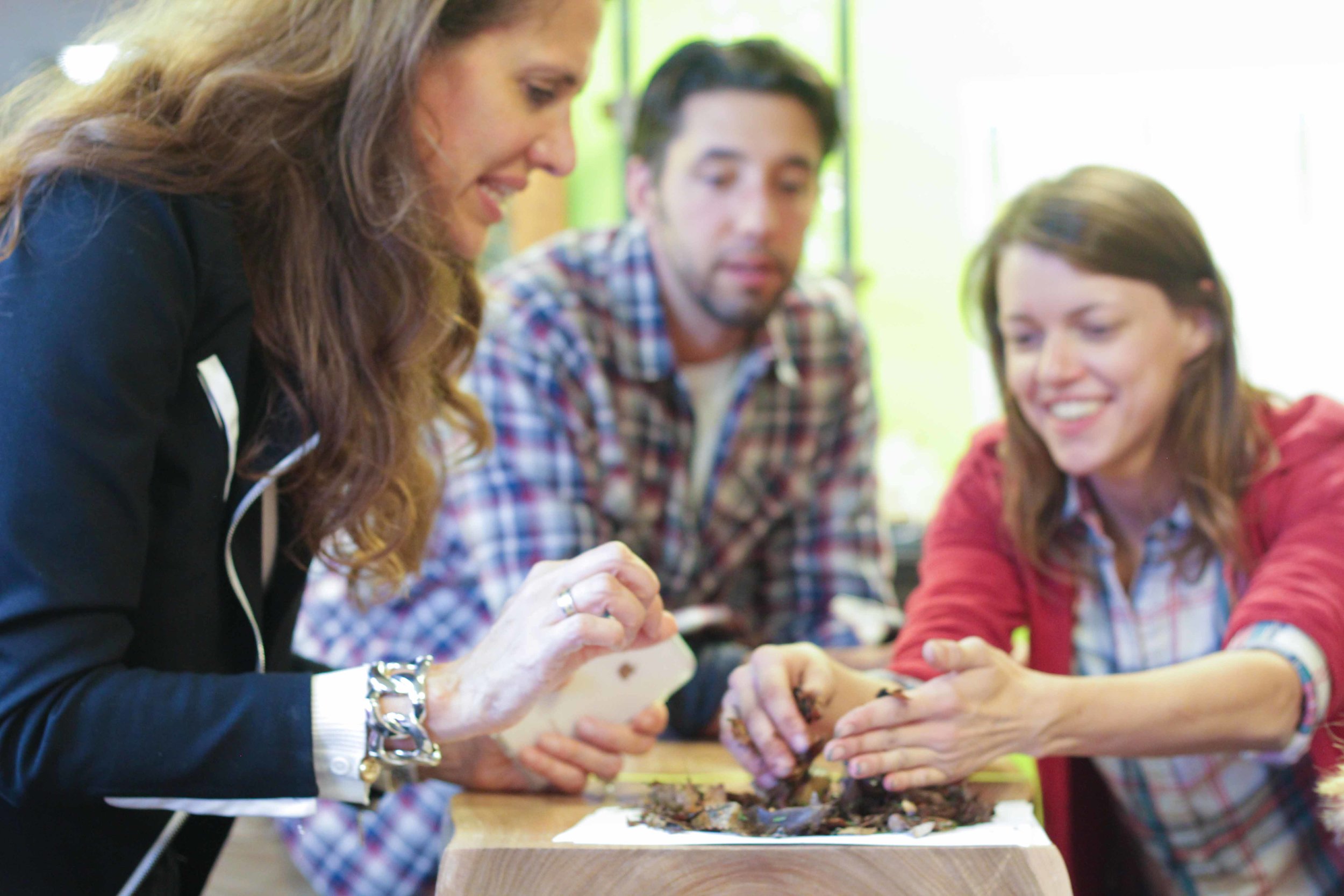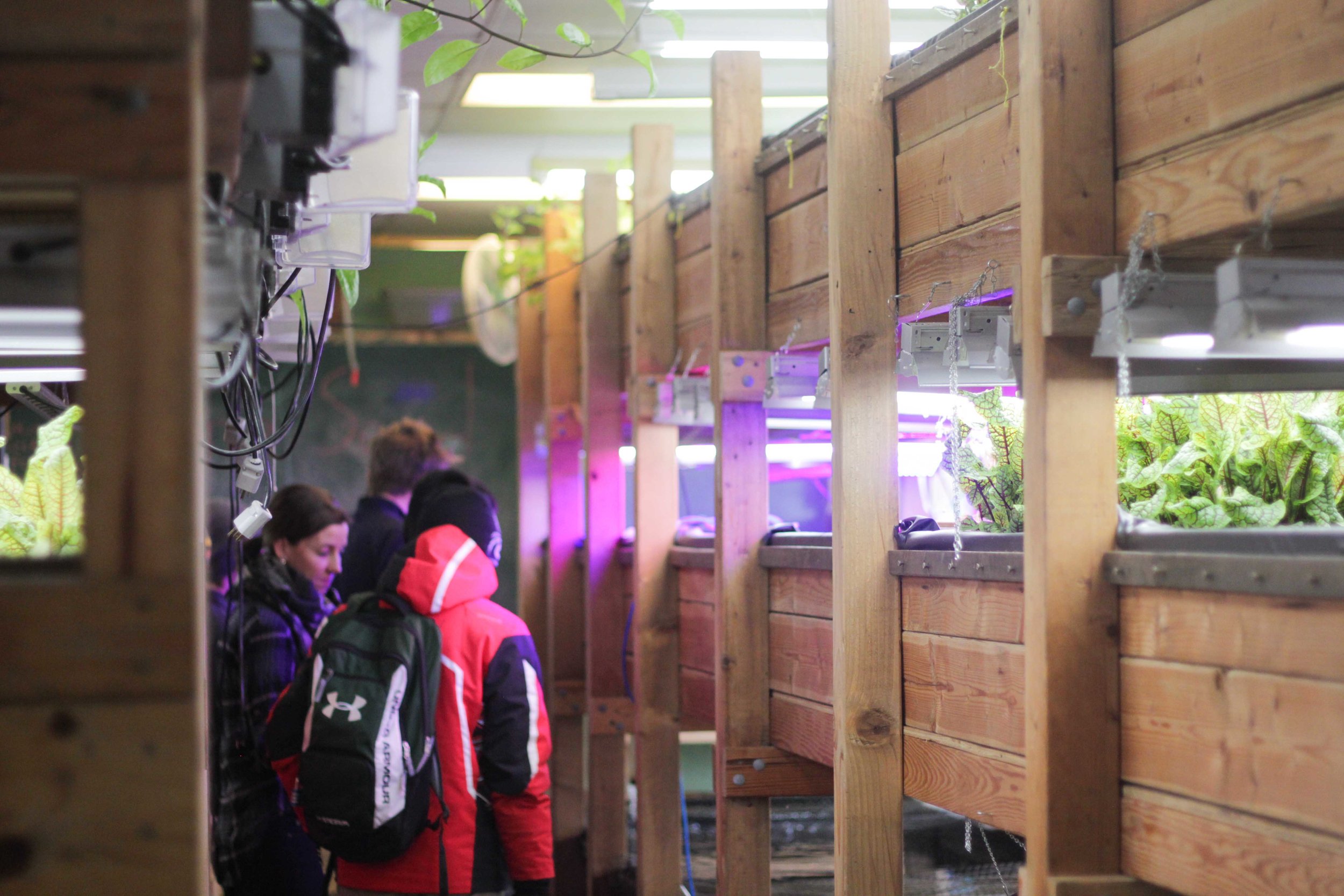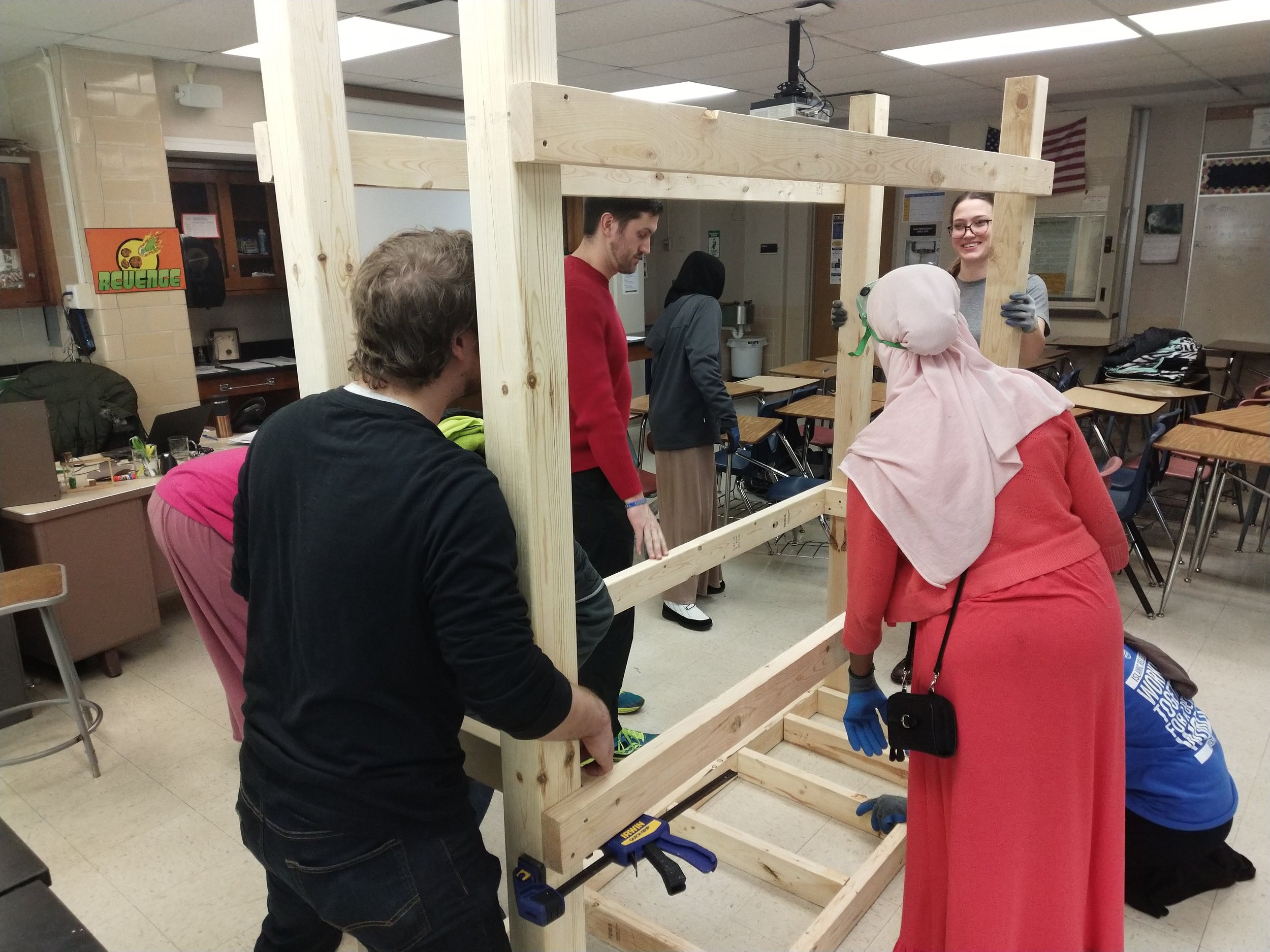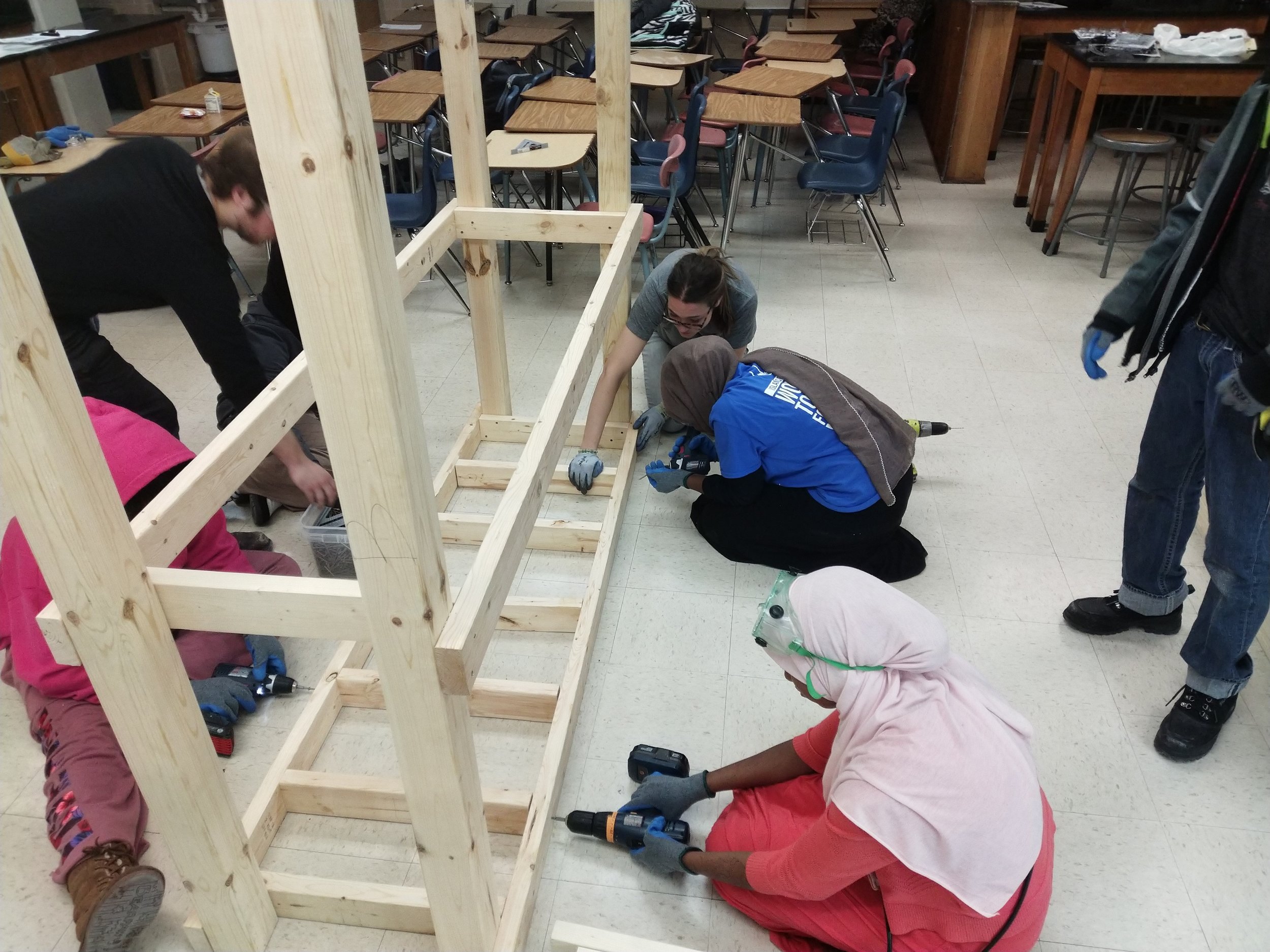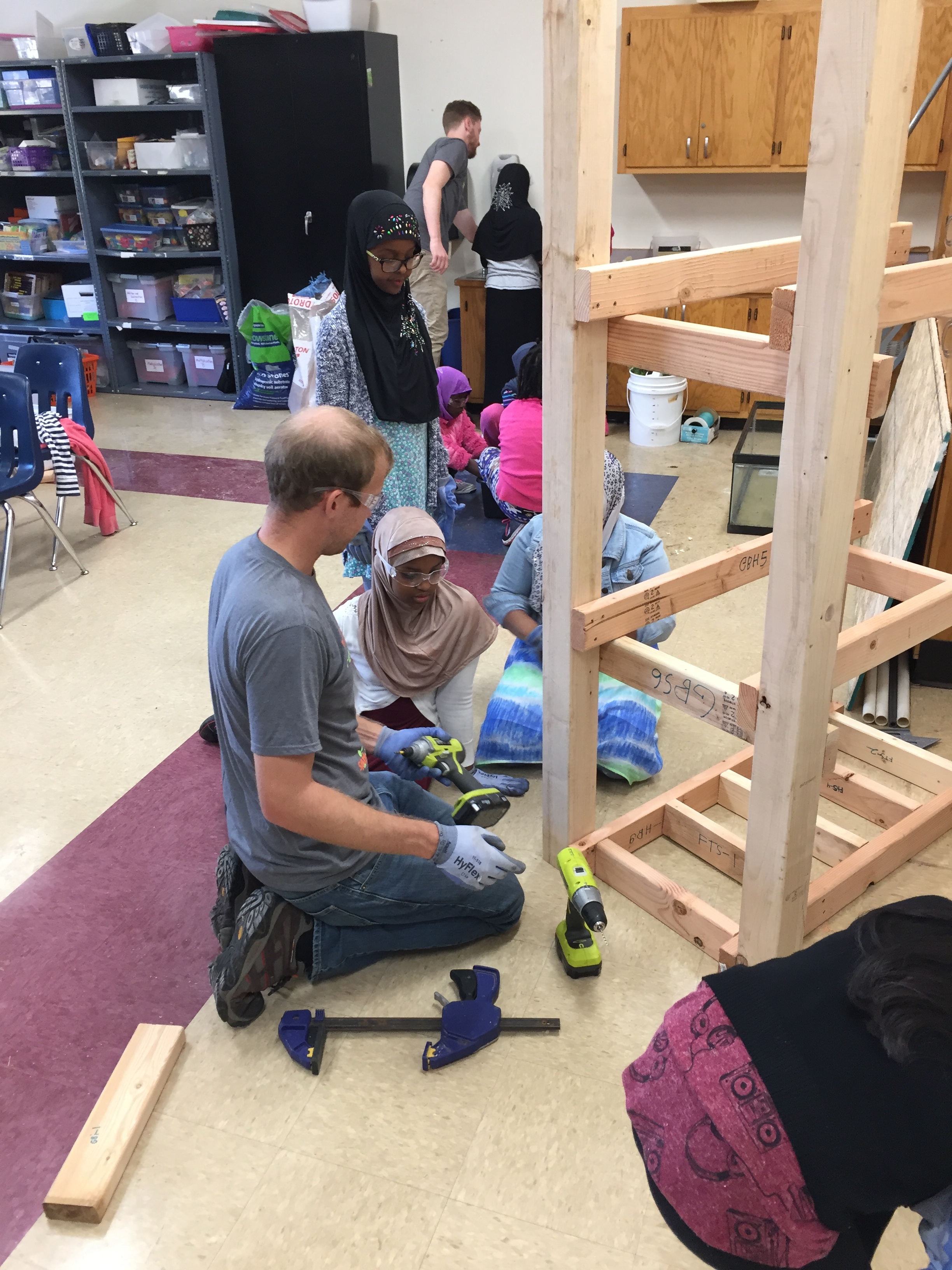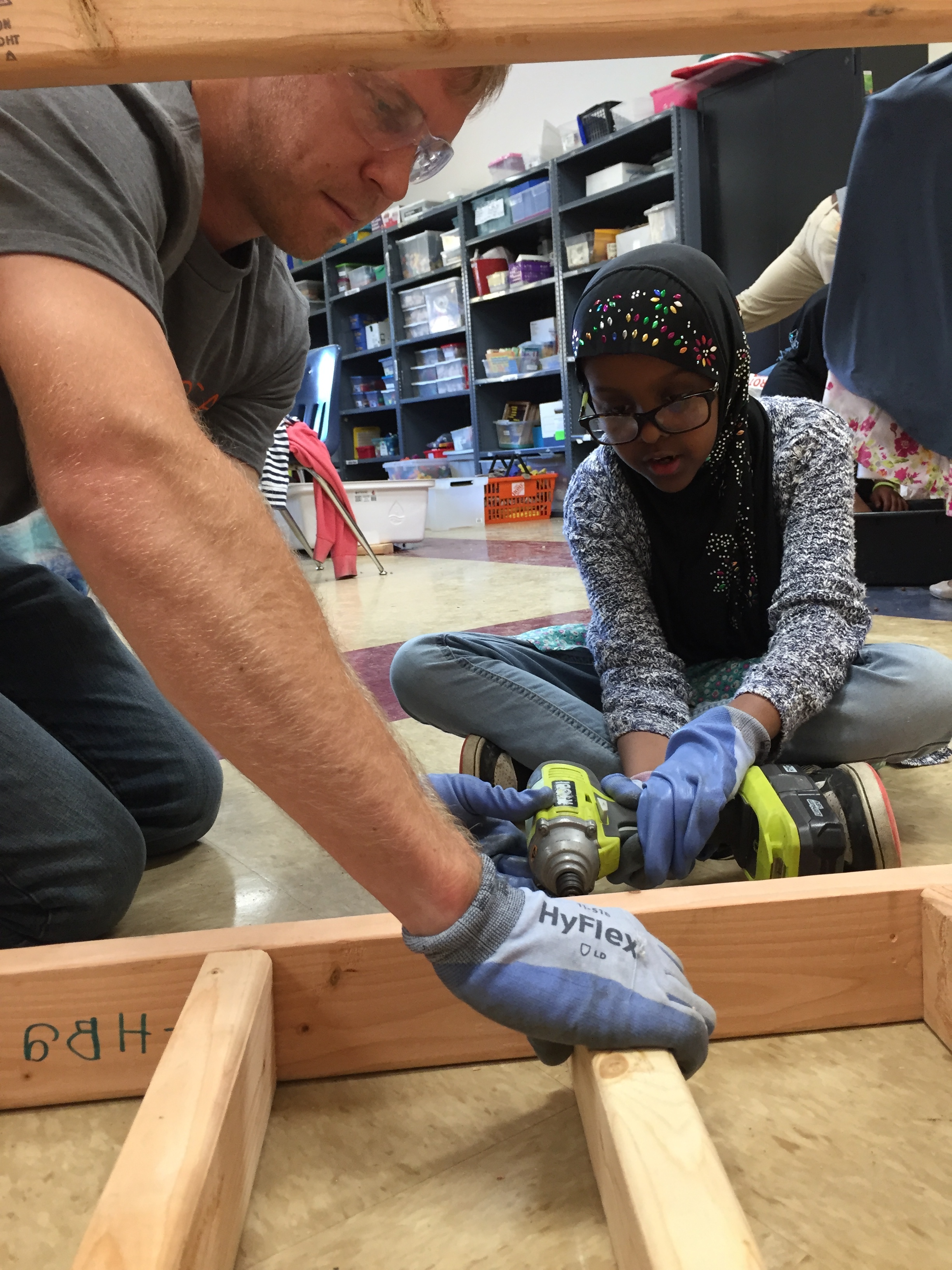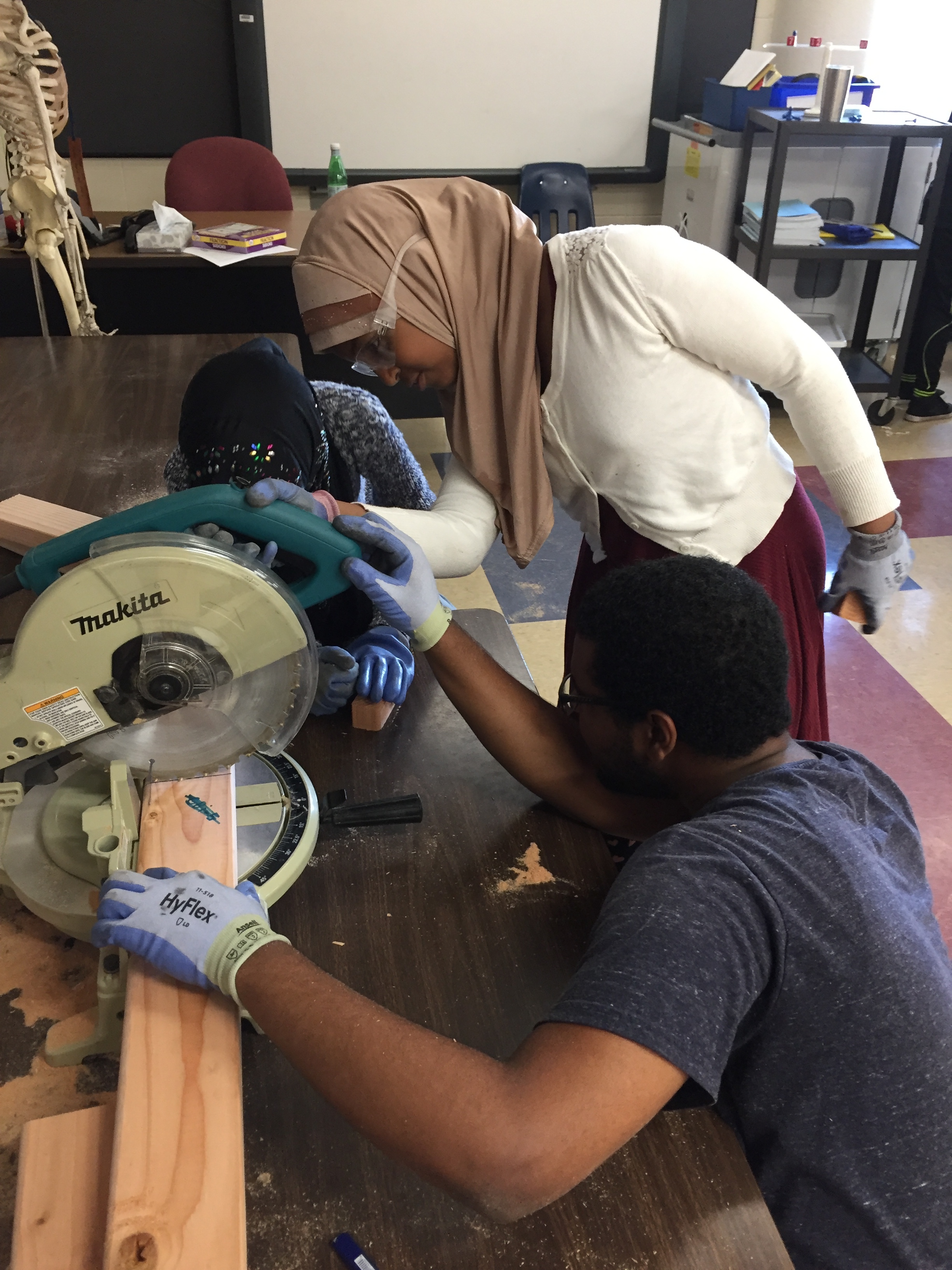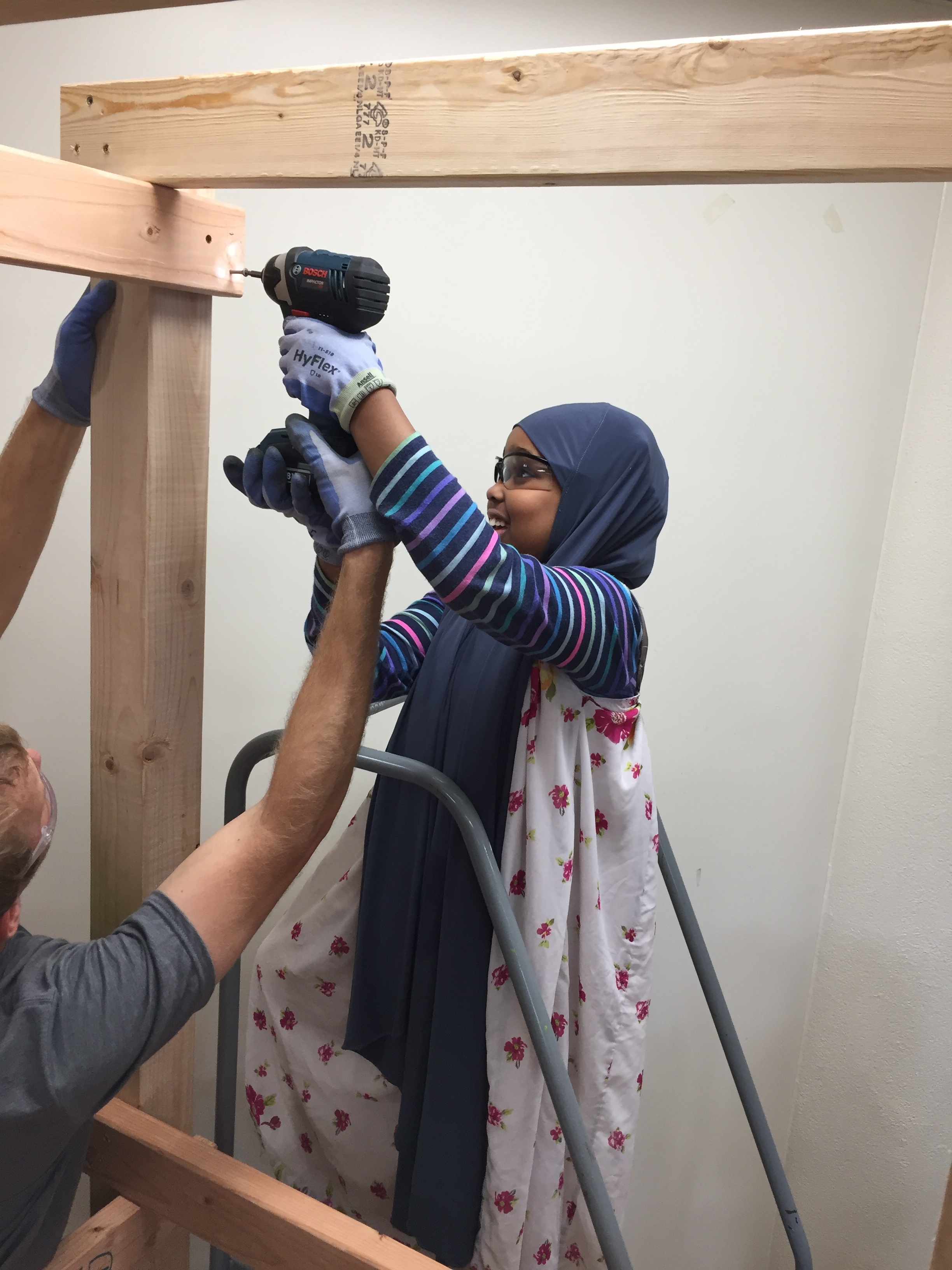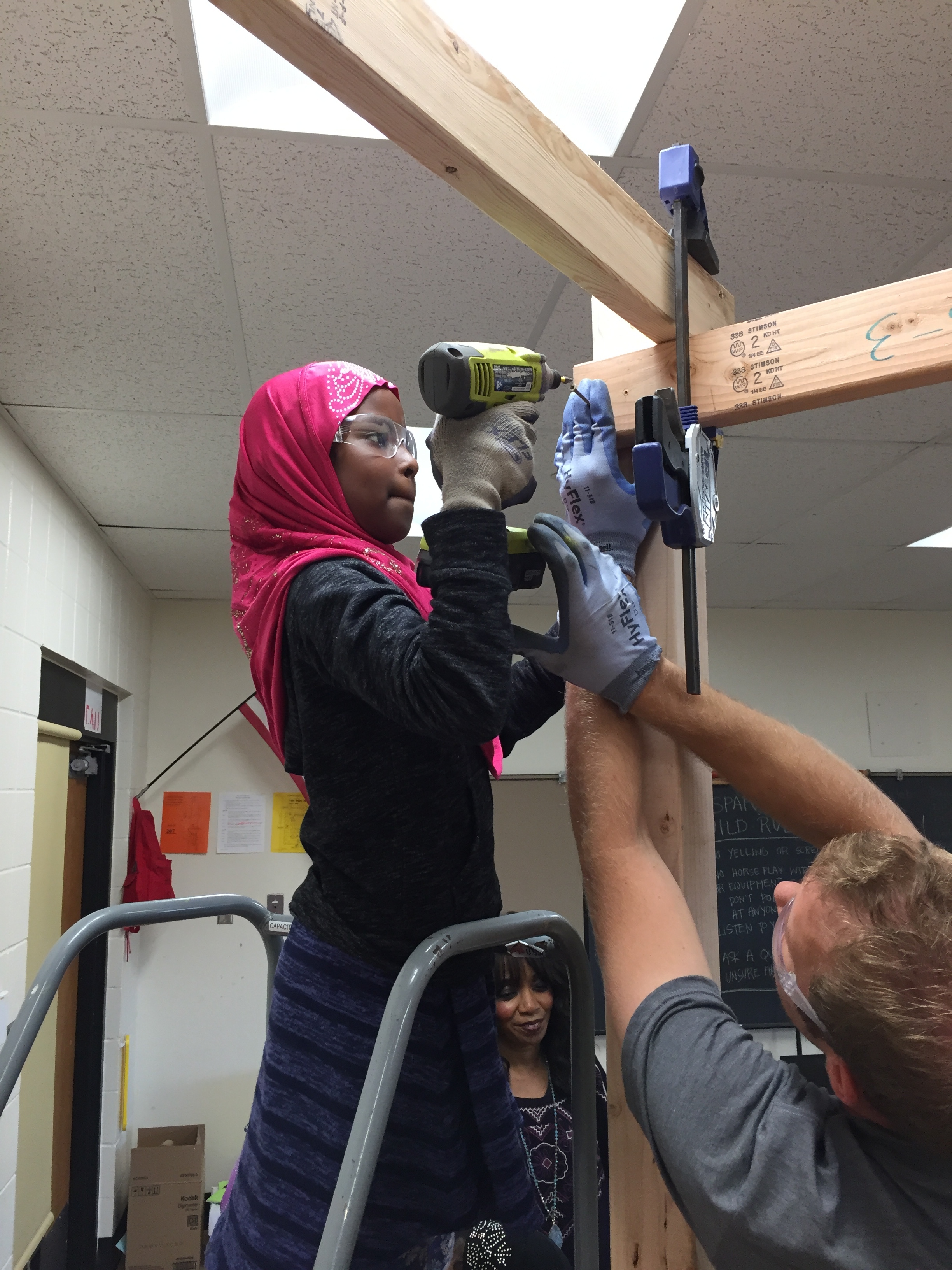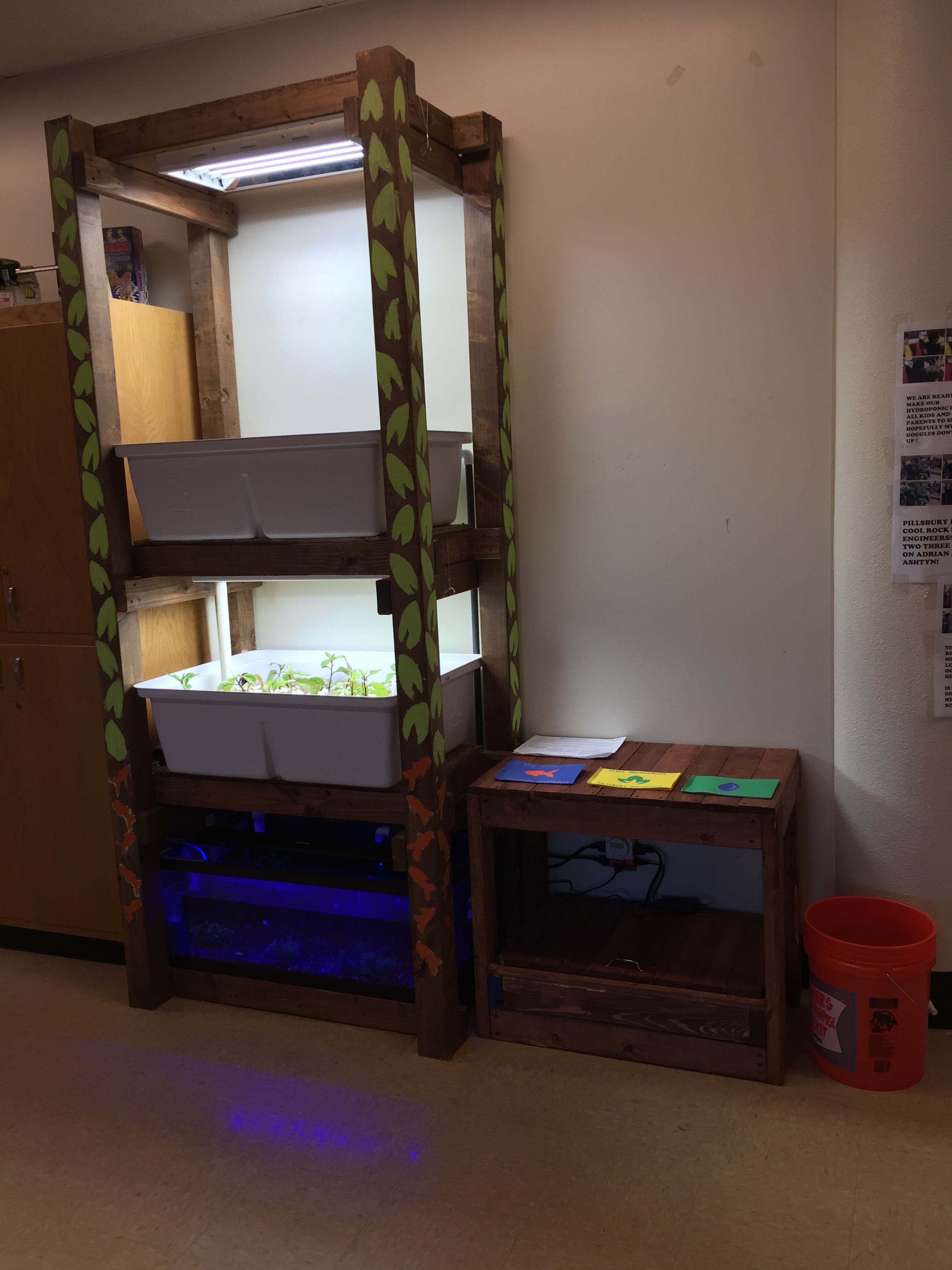The following blog post was written by Becca Ward,
Spark-Y Education Facilitator
Spark-Y is in its second year of programming at Northeast Middle School (NEMS), working weekly with seven classes of 7th graders. Last year, students built an aquaponics system in their greenhouse and this year, students added two more systems to that space, maximizing their growing space with the goal of selling fresh, local produce to their cafeteria!
NEMS Captains Set to Takeover Systems
This fall semester, we had an amazing time building the two new aquaponic systems at NEMS. When we asked students what they enjoyed most about Spark-Y visits, many of them immediately referenced working with the power tools. And I have to agree with them, there’s something special about building something and you just feel more powerful with a tool in your hand.
Now that we have so much wonderful growing space, our priority is to help students get their systems thriving. Unfortunately, it’s been a challenge. While there are a handful of plants growing, 80% of their system isn’t producing. With 175 students getting limited time with the system every other week, system care has been inconsistent at best. To address this problem, we decided to start a Spark-Y captain program. The captain program is a way for a few students to become more involved in the maintenance and care of the system, which will improve the consistency of care and hopefully improve the production of the system.
To select captains, we helped students fill out applications as well as reflect on their strengths and how they can uniquely contribute to improving the system. Ever the pessimist, I expected to get 5-10 exceptional applications out of the 175 we would receive. Wonderfully, I was totally blown away by the enthusiasm and quality of the applications (#neverunderestimateyouth). In fact, there were so many great applications that we decided to expand the program and develop more projects around business planning and system advertising. I also have to mention that it was really uplifting to get solid applications from students who I had no idea were interested in the system.
A few of my favorite excerpts from the applications:
“I would want to become captain because I want to change what my community looks like and to make my community healthy and clean. If I become captain I would also want to help our communities trees and animals and help our nature to be healthy again.”
“I would be good at taking care of the fish because I love animals I like taking care of them and I think it would be cool to raise some fish for each classroom to have. I think that we could have a variety of plants to harvest and sell to the cafeteria.”
“I want to be a captain because I feel like I could find ways to improve our project. I also would like to be a captain to help in other ways such as making a website or being resourceful and looking at other ways to sell our products or planning it.”
“**I Really want to be a captin!**”
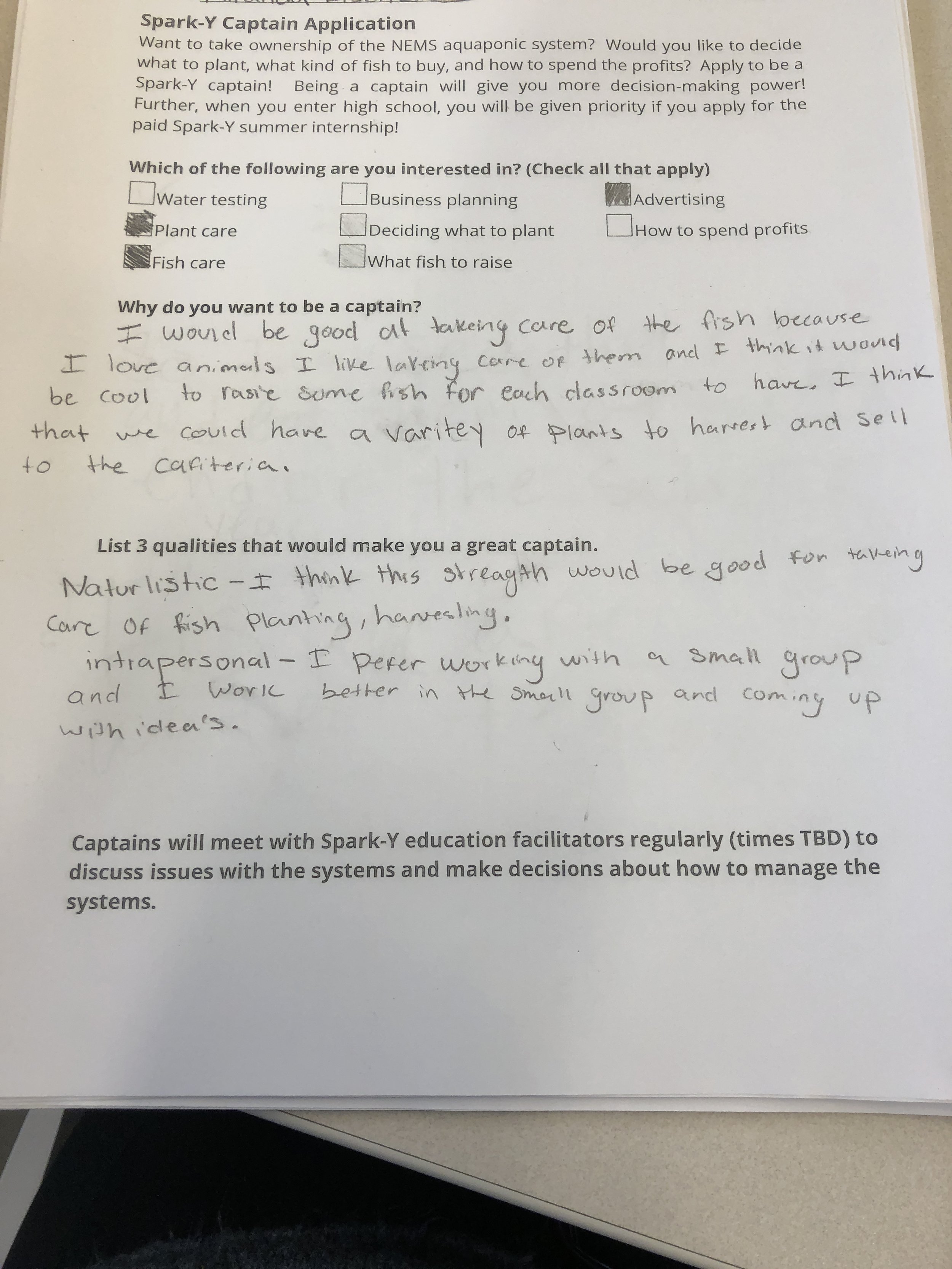
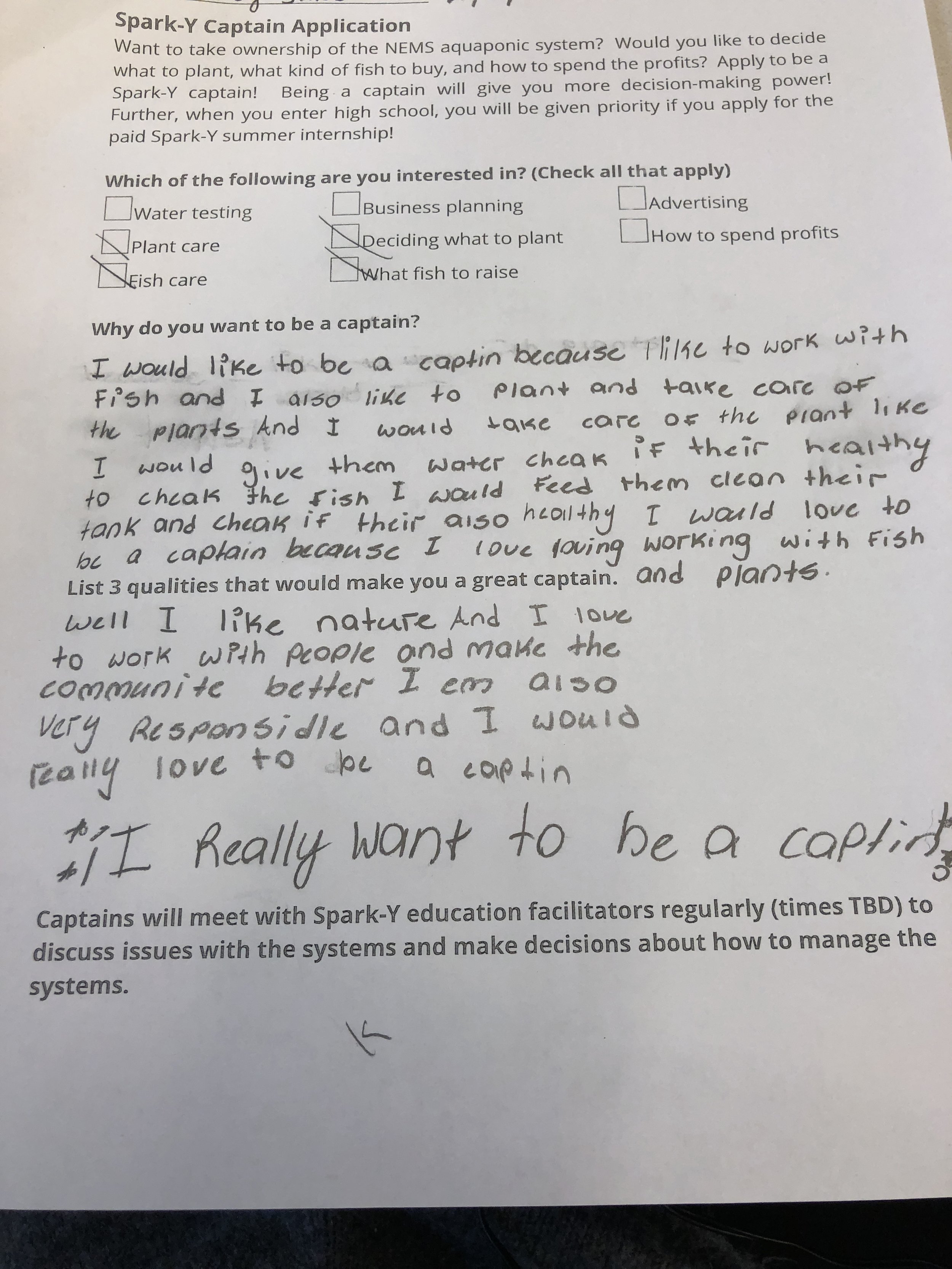
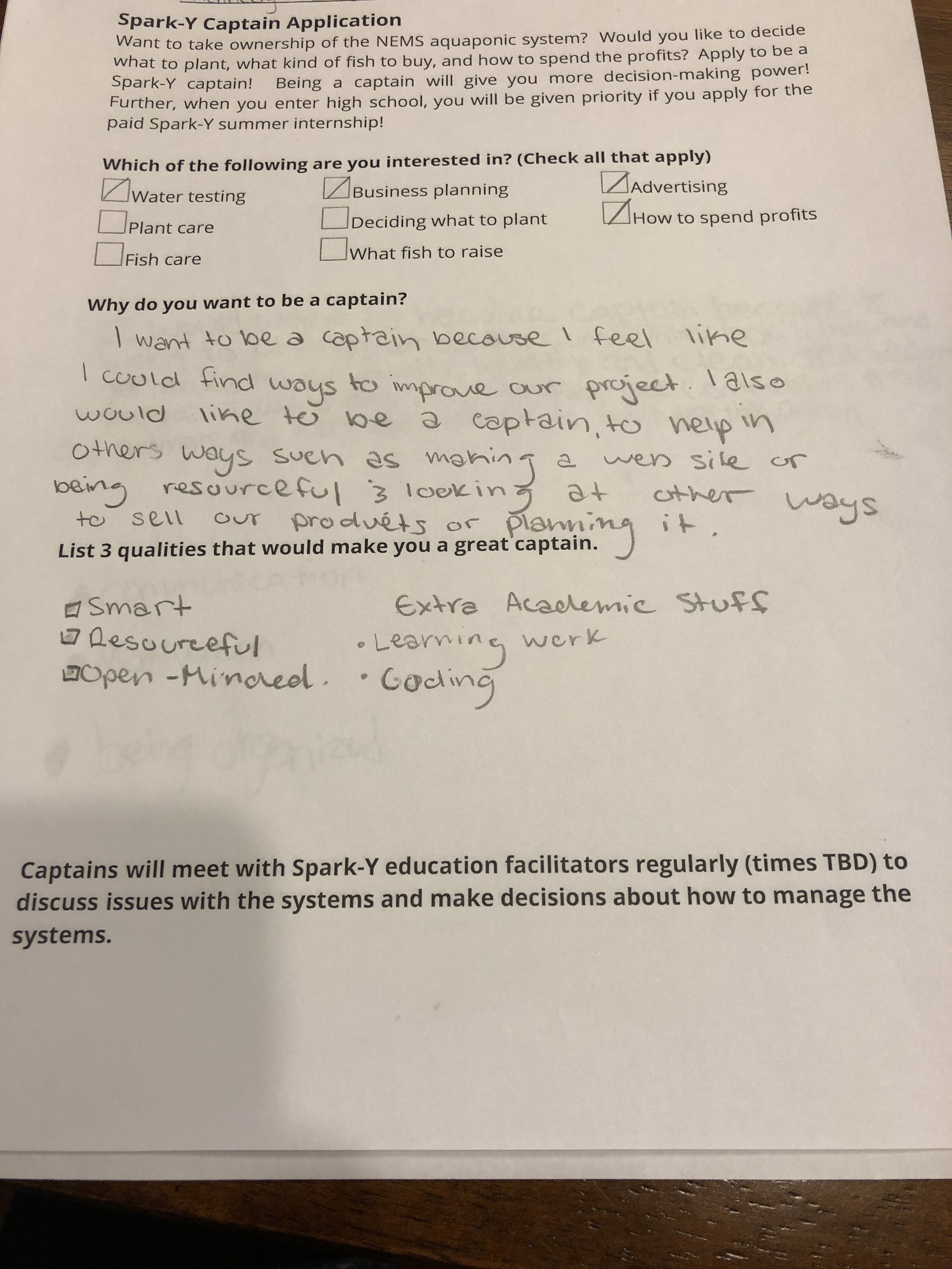
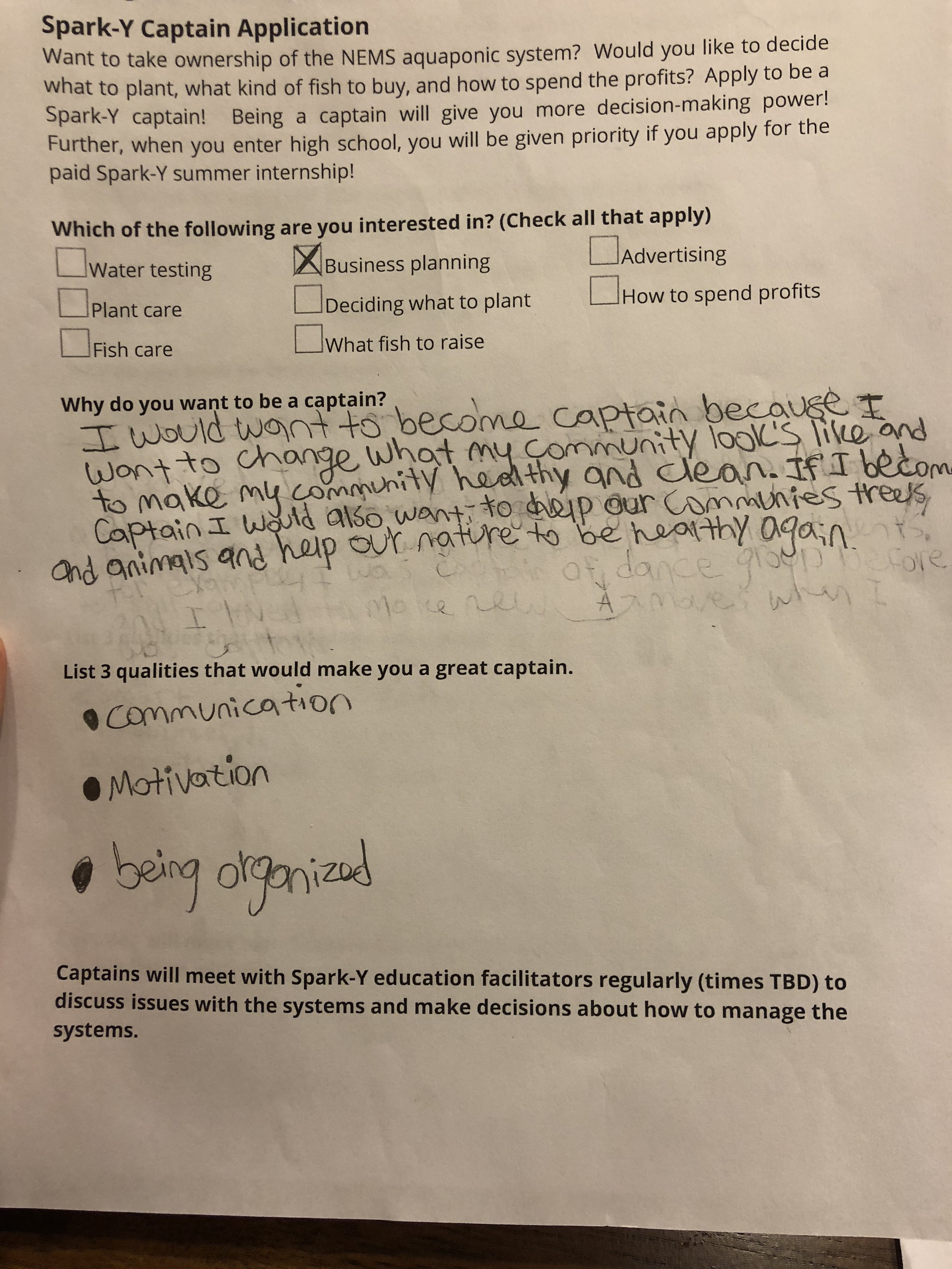
Now that we’ve selected captains, during Spark-Y workshops, they will spend most of the hour working on the system, which has been split into seven sections so each group has a specific growing space that they are responsible for. Captains will decide what to plant, record what and when they planted, and predict when they should germinate. This way they can begin to quantify the success of the system and hopefully, identify what is necessary for successful plant growth. Once the system is thriving, these students will take the lead on harvesting and selling produce to their cafeteria.
Having spent a lot of time worrying about the health of the system, I was so reinvigorated by the enthusiasm in these applications and am excited for these students to take charge of their systems! Also, if you’re wondering, for the students who are not captains, we’ve been working with them to develop projects that they are passionate about and will improve the school. Thus far, we have students who will be designing gardens, improving recycling in their school, and mentoring young students at Pillsbury Elementary!
